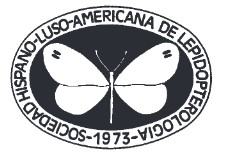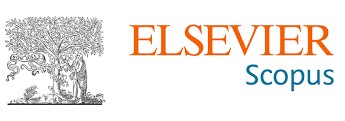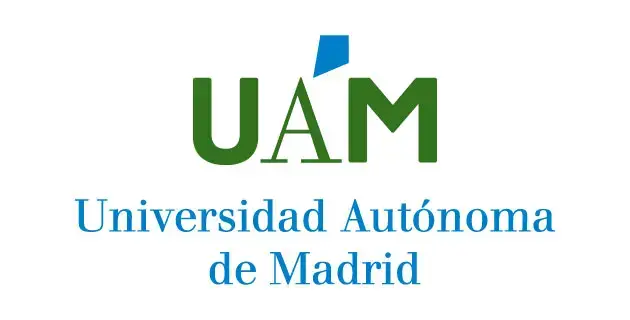Sound production in the immature stages of 18 species of Iberian Lycaenidae and its probable biological function (Lepidoptera: Lycaenidae)
DOI:
https://doi.org/10.57065/shilap.863Keywords:
Lepidoptera, Lycaenidae, behaviour, larva, myrmecophily, pupa, sound production, Iberian PeninsulaAbstract
We recorded and analysed the acoustic signals of 18 lycaenid butterfly species from the Iberian Peninsula, including myrmecophilous and amyrmecophilous species. The studied species belong to 15 genera and are one Theclini, one Eumaeini, two Lycaenini, and 14 Polyommatini. For five species we studied only the sounds produced by larvae and for 13 the sounds of the larvae and the pupae. Sounds were produced by all the studied larvae and 77% of the pupae. We studied the frequency and structure of the sounds for each species. Sound producing mechanisms are different in larvae and pupae: larvae were not observed to have stridulatory organs while the pupae have intersegmental abdominal stridulatory organs. The larvae of two species of Lycaena,
Cacyreus marshalli, and Agriades pyrenaicus produce sounds but are amymercophilous. We did not detect sound production differences between myrmecophilous and amyrmecophilous larvae. Pupae of amyrmecophilous species do not produce sound, with the exception of Lycaena phlaeas. Three of the studied species (Glaucopsyche alexis, Iolana debilitata, and Pseudophilotes panoptes) are myrmecophilous, but do not produce sounds during the pupal stage. Our results therefore show that sound producing behaviour is not initially related with myrmecophily, but could be related with an alarm and/or defense mechanism, that could secondarily be linked with myrmecophilous behaviours.
Downloads
Global Statistics ℹ️
|
767
Views
|
110
Downloads
|
|
877
Total
|
|
References
ADOBE AUDITION v. 1.5, 2007.– Adobe System® Inc. [programa informático] http://www.adobe.com/es/products/audition.html.
ÁLVAREZ, M., 2009.– Estudio de la comunicación acústica en licénidos (Lepidoptera, Lycaenidae) y formícidos (Hymenoptera, Formicidae): 264 pp. PhD Thesis, Universidad Complutense de Madrid, Madrid.
ÁLVAREZ, M., RUIZ, E., MUNGUIRA, M. L., MARTÍNEZ, M. D. & HERNÁNDEZ, J. M., 2005.– La emisión de sonido en hormigas y mariposas: ¿un sistema de comunicación entre especies? In Fundamental. Fundación Conjunto paleontológico de Teruel-Dinópolis.– XVI Bienal de la Real Sociedad Española de Historia Natural: 39-42, Teruel.
ÁLVAREZ, M., MUNGUIRA, M. L. & MARTÍNEZ-IBÁÑEZ, M. D., 2014.– Comparative study of the morphology of stridulatory organs of the Iberian lycaenid butterfly pupae (Lepidoptera).– Journal of Morphology, 275: 414-430. DOI: https://doi.org/10.1002/jmor.20224
BARBERO, F., BONELLI, S., THOMAS, J. A., BALLETO, E. & SCHÖNROGGE, K., 2009a.– Acoustical mimicry in a predatory social parasite of ants.– The Journal of Experimental Biology, 212: 4084-4090. DOI: https://doi.org/10.1242/jeb.032912
BARBERO, F., THOMAS, J. A., BONELLI, S., BALLETO, E. & SCHÖNROGGE, K., 2009b.– Queen ants make distinctive sounds that are mimicked by a butterfly social parasite.– Science, 323: 782-785. DOI: https://doi.org/10.1126/science.1163583
BARBERO, F., PATRICELLI, D., WITEK, M., BALLETTO, E., CASACCI, L. P., SALA, M., & BONELLI, S., 2012.– Myrmica Ants and Their Butterfly Parasites with Special Focus on the Acoustic Communication.– Psyche, 2012: 1-11. DOI: https://doi.org/10.1155/2012/725237
BILLEN, J., 2006.– Signal variety and communication in social insects.– Proceedings of the Netherlands Entomological Society Meeting, 17: 9-25.
BOWEN, J. L., MAHONY, S. J., MASON, A. C. & YACK, J. E., 2008.– Vibration-mediated territoriality in the warty birch caterpillar Drepana bilineata.– Physiological Entomology, 33: 238-250. DOI: https://doi.org/10.1111/j.1365-3032.2008.00627.x
CLARIDGE, M., 2006.– Insect Sounds and Communication. An Introduction.– In S. DROSOPOULOS & M. F. CLARIDGE (eds). Insect Sounds and Communication: pp. 3-10. Taylor & Francis Group, Boca de Ratón, Florida. DOI: https://doi.org/10.1201/9781420039337.pt1
DE VRIES, P. J., 1990.– Enhancement of symbioses between butterfly caterpillars and ants by vibrational communication.– Science, 248: 1104-1106. DOI: https://doi.org/10.1126/science.248.4959.1104
DE VRIES, P. J., 1991a.– Call Production by Myrmecophilous Riodinid and Lycaenid Butterfly Caterpillars (Lepidoptera): Morphological, Acoustical, Functional, and Evolutionary Patterns.– American Museum Novitates, 3025: 1-23.
DE VRIES, P. J., 1991b.– Detecting and recording the calls produced by butterfly caterpillars and ants.– Journal of Research on the Lepidoptera, 28(4): 258-262 DOI: https://doi.org/10.5962/p.332217
DE VRIES, P. J., COCROFT, R. B. & THOMAS, J. A., 1993.– Comparison of acoustical signals in Maculinea butterfly caterpillars and their obligate host Myrmica ants.– Biological Journal of the Linnean Society, 49: 229-238. DOI: https://doi.org/10.1111/j.1095-8312.1993.tb00902.x
DOWNEY, J. C., 1966.– Sound Production in pupae of Lycaenidae.– Journal of Lepidopterists´ Society, 20(3): 129-155.
DOWNEY, J. C., 1967.– Sound-Production in Netherland Lycaenidae.– Entomologische Berichten, 27: 153- 157.
DOWNEY, J. C. & ALLYN, A. C., 1973.– Butterfly ultrastructure. Sound Production and Associated Abdominal Structures in Pupae of Lycaenidae and Riodinidae.– Bulletin of the Allyn Museum, 14: 1-47.
DOWNEY, J. C. & ALLYN, A. C., 1978.– Sounds produced in pupae of Lycaenidae.– Bulletin of the Allyn Museum, 48: 1-14.
ELFFERICH, N. W., 1998.– Is the larval and imaginal signalling of Lycaenidae and other Lepidoptera related to communication with ants?- Deinsea, 4: 91-95
ELIOPOULOS, E., 2006.– Sound and Techniques in Sound Analysis.– In S. DROSOPOULOS & M. F. CLARIDGE (eds.). Insect Sounds and Communication: pp. 11-32. Taylor & Francis Group, Boca Ratón, Florida. DOI: https://doi.org/10.1201/9781420039337.ch2
FEDERLEY, H., 1905.– Sound produced by Lepidopterous Larvae.– Journal of the New York Entomological Society, 13: 109-110.
FIEDLER, K., 1992.– Recent contributions to the behavioural ecology and evolution of lycaenid-ant associations (Lepidoptera, Lycaenidae).– Nota lepidopterologica, Supplement 4: 11-13.
FIEDLER, K., SEUFERT, P., MASCHWITZ, U. & IDRIS, A., 1995.– Notes on larval biology and pupal morphology of Malaysian Curetis butterflies (Lepidoptera: Lycaenidae).– Transactions of the Lepidopterological Society of Japan, 45(4): 287-299.
GARCÍA-BARROS, E., MUNGUIRA, M. L., STEFANESCU, C. & VIVES MORENO, A., 2013.– Lepidoptera: Rhopalocera.– In M. A. RAMOS et al. (eds.). Fauna Ibérica, 37: 1213 pp. Museo Nacional de Ciencias Naturales, CSIC. Madrid.
GOLDWAVE Audio Editor v. 5.19 2007. GoldWave® Inc. [programa informático] https://www.goldwave.com/
HASKELL, P. T., 1961.– Insect sounds. Aspects of Zoology Series: 189 pp. H. F. & G. Witherby Ltd., London.
HALLIDAY, T. R. & SLATER, P. J. B., 1983.– Animal Behaviour. Communication: 225 pp. Blackwell Scientific Publications, Oxford.
HINTON, H. E., 1948.– Sound production in Lepidopterous pupae.– The Entomologist, 81: 254-269.
HOEGH-GULDBERG, O., 1972.– Pupal sound production of some Lycaenidae.– Journal of Research on the Lepidoptera, 10(2): 127-147. DOI: https://doi.org/10.5962/p.333592
HUNT, J. H. & RICHARD, F. J., 2013.– Intracolony vibroacoustic communication in social insects.– Insectes Sociaux, 60: 403-417. DOI: https://doi.org/10.1007/s00040-013-0311-9
KIRCHNER, W. H., 1997.– Acoustical communication in social insects.– In M. LEHRER. Orientation and Communication in Arthropods: 273-300. Birkhäuser Verlag, Basel. DOI: https://doi.org/10.1007/978-3-0348-8878-3_10
KITCHING, R. L., SCHEERMEYER, E., JONES, R. E. & PIERCE, N. E., 1999.– The Biology of Australian Butterflies (Monographs on Australian Lepidoptera, 6: 395pp. CSIRO Press, Sydney. DOI: https://doi.org/10.1071/9780643105140
NASH, D. R., 2005.– Communication with the host ants. Kobenhavms Universitet. Available from http://www.zi.ku.dk/personal/drnash/atta/pages/comm.html (accessed 24 February 2005].
OBREGÓN, R., SHAW, M. R., FERNÁNDEZ-HAEGER, J. & JORDANO, D., 2015.– Parasitoid and ant interactions of some Iberian butterflies (Insecta: Lepidoptera).– SHILAP Revista de lepidopterología, 43(171): 439-454.
PIERCE, N. & NASH, D., 1999.– The imperial Blue: Jalmenus evagoras (Lycaenidae).– In R. L. KITCHING, E. SCHEERMEYER, R. E. JONES & N, E. PIERCE (eds.). The Biology of Australian Butterflies. Monographs on Australian Lepidoptera, 6: pp. 277-313. CSIRO Press, Sydney.
PIERCE, N., BRABY, M. F., HEATH, A., LOHMAN, D. J., MATHEW, J., RAND, D. B. & TRAVASSOS, M. A., 2002.– The ecology and evolution of ant association in the Lycaenidae (Lepidoptera).– Annual Review of Entomology, 47(1): 733-771. DOI: https://doi.org/10.1146/annurev.ento.47.091201.145257
PRELL, H., 1913.– Über zirpende Schmetterlingspuppen.– Biologisches Zentralblatt, 33: 496-501.
RIVA, F., BARBERO, F., BONELLI, S., BALLETTO, E. & CASACCI, L. P., 2017.– The acoustic repertoire of lycaenid butterfly larvae.– Bioacoustics, 26: 77-90. DOI: https://doi.org/10.1080/09524622.2016.1197151
SALA, M., CASACCI, L. P., BALLETTO, E., BONELLI, S. & BARBERO, F., 2014.– Variation in butterfly larval acoustics as a strategy to infiltrate and exploit host ant colony resources.– PLoS ONE, 9(4): e94341. DOI: https://doi.org/10.1371/journal.pone.0094341
SCHÖNROGGE, K., TOPHAM, E., WARDLAW, J. C., CHARLES, M., STANKIEWICZ, A., SIELEZNIEW, M. & THOMAS, J. A., 2005.– Acoustical interactions between Maculinea alcon and its host ants.– In J. SETTELE, M. ÁLVAREZ, M. L. MUNGUIRA, E. RUIZ, J. M. HERNÁNDEZ & M. D. MARTÍNEZ-IBÁÑEZ E. KÜHN & J. THOMAS (eds.). Species Ecology along a European Gradient: Maculinea Butterflies as a Model. Studies on the Ecology and Conservation of Butterflies in Europe, 2: pp 84-87. Pensoft, Sofía-Moscú.
SCHURIAN, K. G. & FIEDLER, K., 1991.– Einfache Methoden zur Schallwahrnehmung bei Bläulingslarven (Lepidoptera, Lycaenidae).– Entomologische Zeitschrift, 101(21): 393-398.
SCHURIAN, K. G., GASCOIGNE-PEES, M. & DIRINGER, Y., 2006.– Contribution to the life-cycle, ecology and taxonomy of Polyommatus (Lysandra) coridon nufrellensis Schurian (1977) (Lepidoptera: Lycaenidae).– Linneana Belgica, 20: 180-192.
SETTELE, J., BARBERO, F., MUSCHE, M., THOMAS, J. A. & SCHÖNROGGE, K., 2011.– Singing the blues: from experimental biology to conservation application.– The Journal of Experimental Biology, 214: 1407-1410. DOI: https://doi.org/10.1242/jeb.035329
SILVA, N. A. P., DUARTE, M., ARAUJO, E. B. & MORAIS, H. C., 2014.– Larval Biology of anthophagous Eumaeini (Lepidoptera: Lycaenidae, Theclinae) in the Cerrado of Central Brazil.– Journal of Insect Science, 14: 1-17 DOI: https://doi.org/10.1093/jisesa/ieu046
THOMAS, J. A., SCHÖNROGGE, K., BONELLI, S., BARBERO, F. & BALLETTO, E., 2010.– Corruption of ant acoustical signals by mimetic social parasites.– Communicative & Integrative Biology, 3: 169-171. DOI: https://doi.org/10.4161/cib.3.2.10603
TRAVASSOS, M. A. & PIERCE, N. E., 2000.– Acoustics, context and function of vibrational signalling in a lycaenid butterfly-ant mutualism.– Animal Behaviour, 60: 13-26. DOI: https://doi.org/10.1006/anbe.1999.1364
YACK, J. E., SMITH, M. L. & WEATHERHEAD, P. J., 2001.– Caterpillar talk: Acoustically mediated territoriality in larval Lepidoptera.– Proceedings of the National Academy of Sciences of the United States of America, 98: 11371-11375. DOI: https://doi.org/10.1073/pnas.191378898
Downloads
Published
How to Cite
Issue
Section
License
Copyright (c) 2018 M. Álvarez, M. L. Munguira, E. Ruiz, J. M. Hernández, M. D. Martínez-Ibáñez

This work is licensed under a Creative Commons Attribution 4.0 International License.
The author SS retains his trademark and patent rights to any process or procedure within the article.
The author retains the right to share, distribute, perform and publicly communicate the article published in SHILAP Revista de lepidopterología, with initial acknowledgement of its publication in SHILAP Revista de lepidopterología.
The author retains the right to make a subsequent publication of his work, from using the article to publishing it in a book, provided that he indicates its initial publication in SHILAP Revista de lepidopterología.
Each submission to SHILAP Revista de lepidopterología must be accompanied by an acceptance of copyright and acknowledgement of authorship. By accepting them, authors retain copyright of their work and agree that the article, if accepted for publication by SHILAP Revista de lepidopterología, will be licensed for use and distribution under a "Creative Commons Attribution 4.0 International" (CC BY 4.0) licence that allows third parties to share and adapt the content for any purpose giving appropriate credit to the original work.
You may read here the basic information and the legal text of the license. The indication of the CC BY 4.0 License must be expressly stated in this way when necessary.
As of 2022, the content of the print and digital version is licensed under a "Creative Commons Attribution 4.0 International License" (CC BY 4.0), licence that allows third parties to share and adapt the content for any purpose giving appropriate credit to the original work.
Previous content in the journal was published under a traditional copyright licence; however, the archive is available for free access.
When using the contents of SHILAP Revista de lepidopterología published before 2022, including figures, tables or any other material in printed or electronic format belong to the authors of the articles, the authors must obtain the permission of the copyright holder. Legal, financial and criminal liabilities in this respect belong to the author(s).
In application of the Principle of Priority of the International Code of Zoological Nomenclature, no other version than the one published by the publisher may be deposited in repositories, personal websites or similar.





























